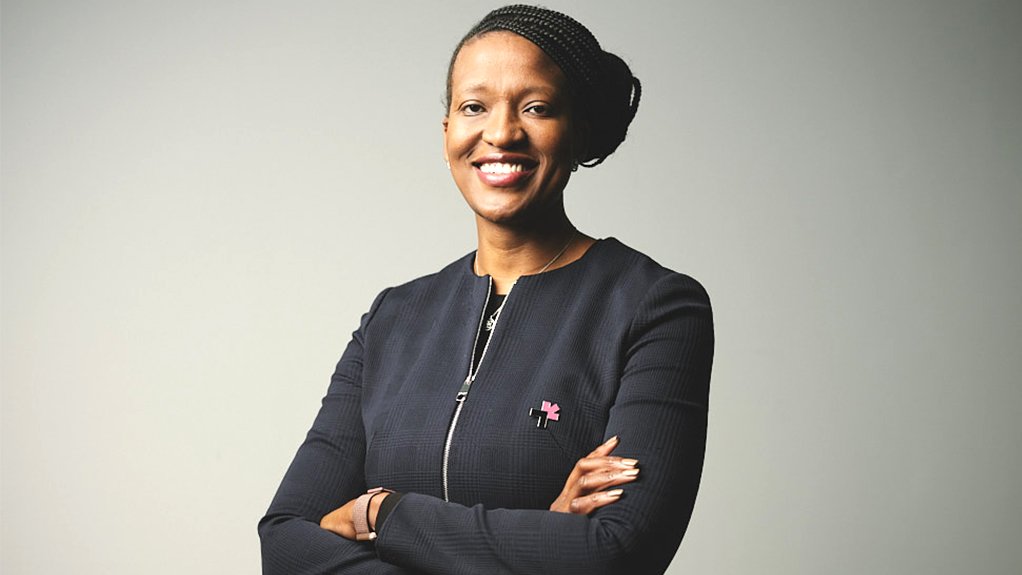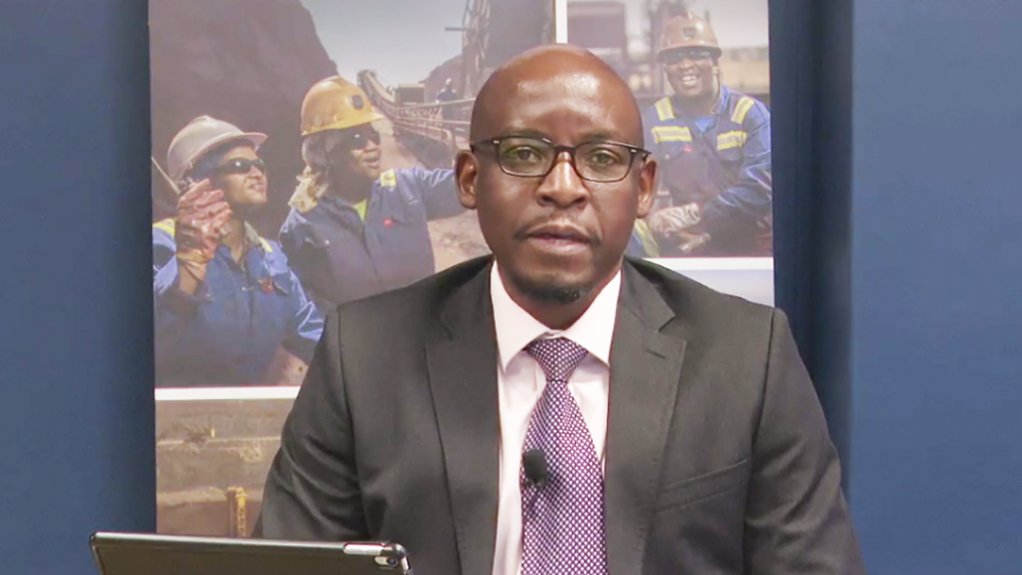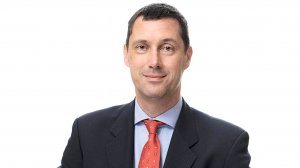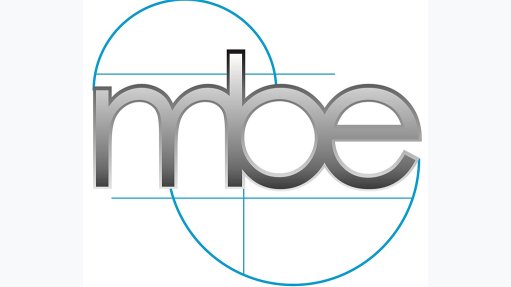Green steel to cut Scope 3, solar to cut Scope 2, hydrogen to cut Scope 1 – Kumba Iron Ore




Kumba Iron Ore CEO Mpumi Zikalala.
Kumba Iron Ore executive head marketing and seaborne logistics Timo Smit.
Kumba CFO Bothwell Mazarura.
JOHANNESBURG (miningweekly.com) – South Africa’s Kumba Iron Ore sees itself as a critical player in the decarbonisation journey.
Regarding tricky Scope 3 emission reduction, the Anglo American company is partnering with top steelmakers Salzgitter, ThyssenKrupp and Nippon to cut its Scope 3 emissions; advancing fast towards generating its own solar power from the hot Northern Cape to lower its Scope 2 emissions; and looking to green hydrogen to power fuel cell mine trucks to cut its Scope 1 emissions.
“This is the work that we're busy with, starting off with the 68 MW of solar at Sishen, and working with the broader Anglo American renewable energy ecosystem, which will ultimately be a combination of especially solar but also wind.
“There’s also pumped hydro storage that would come in as well, but that’s the pathway for us. We are essentially serious about this journey and that’s why when we went out and spoke about our targets, we said these are targets, and not ambitions,” said upbeat Kumba Iron Ore CEO Mpumi Zikalala following the JSE-listed company’s presentation of results, which saw the payout of R14.5-billion worth of 2022 dividends, with the company’s empowerment partners receiving R4.7-billion for the year.
Pumped hydro storage involves the use of mines as big energy batteries.
“We’re absolutely excited by the green hydrogen haulage truck that we’re piloting at Mogalakwena and clearly that technology will continue maturing and as part of our long-term capital replacement schedule, that’s where we see ourselves converting our fleet into green hydrogen. It’s part of the broader scope of work. We’re looking at that coming in around 2026 but we’ll continue expanding on that,” said Zikalala.
“We’re absolutely committed when it comes to the reduction of carbon emissions. What we're looking at internally from a Scope 1 and 2 perspective is a 30% reduction by 2030 in so far as greenhouse gas emissions are concerned and the carbon neutrality goals that come in by 2040.
“We’ve got a clear pathway that gets us there. Then, from a Scope 3 perspective, we don’t just see ourselves as bystanders. It’s not just about the high quality of ore that we produce, but we see ourselves as being critical players in the decarbonisation journey,” said Zikalala.
Kumba has formed a number of partnerships with steelmaking customers to supply them with premium product suitable for direct reduction iron (DRI) steelmaking because some are pivoting away from blast furnace production.
“For DRI production, you need a very high-quality iron-ore. Our best quality, we believe, is good enough for DRI steelmaking, so we’ve formed partnerships with Salzgitter and ThyssenKrupp, in Germany, and with Nippon Steel, in Japan, to investigate the optimal green steelmaking processes," Kumba Iron Ore executive head marketing and seaborne logistics Timo Smit said in response to Mining Weekly.
“We’ve also formed partnerships with some blast-furnace steelmakers looking to improve the efficiency of blast furnaces; for example, a partnership with Hyundai Steel, looks at how our products can make a difference in their blast furnaces.
“I should caution that these are longer-term developments but certainly both for more efficient blast furnaces and for DRI steelmaking, the better the quality of the raw material, the lower the emissions, so Kumba is very well placed to play an important role in this green steel transition by virtue of the high quality of our product,” said Smit.
The number of steel mills with emission-reduction targets increased exponentially in 2021 to a quarter of global steel production. Europe leads with its top-five mills targeting emission reductions of 58%.
To achieve this, European steelmakers are expected to pivot more towards DRI, which offers a larger carbon dioxide reduction compared with the blast-furnaces route, especially when based on green renewable hydrogen.
More than 20 DRI projects have been announced in Europe, which is likely to bring 40-million to 50-million tonnes of capacity to the region and demand for high-quality ores will increase, as it offers higher productivity and has lower energy requirements.
“One of the primary differentiators that we have is the quality of our orebody. The Fe (iron) quality and lump-to-fine ratio of our ore are significantly ahead of our peers, which positions us well in the market, especially with the increasing focus on decarbonisation and green steel, where higher premium products play an increasingly important role,” Kumba CFO Bothwell Mazarura said during the 2022 results presentation.
The long-term price forecast for premium ores is expected to remain above the historical average and Kumba’s higher share of lump and high-quality iron plays firmly into the green transition imperative.
Speaking to Mining Weekly in a one-on-one cellphone interview, Zikalala responded to these questions:
Mining Weekly: When will Kumba begin generating its first solar power?
Zikalala: That will begin in 2025. We’re looking at 68 MW that will be going to Sishen mine and we’re also investigating 10 MW for the Kolomela mine, but that will most likely be part of the Anglo American renewable energy ecosystem that we’re looking at more broadly.
Will this renewable energy also be used to generate green hydrogen for on-site mobility?
Not initially, the initial sizing of the 68 MW for Sishen is looking at current requirements.
When will Kumba’s quality iron-ore begin to help blast-furnace steelmaking become less carbon-intensive?
That’s happening right now. Even with the blast furnace technology, for every 1% improvement in Fe content, blast furnaces essentially realise a 2% to 3% reduction in their carbon emissions. Secondly, we’re very big on lump. Lump assists with a further 10% reduction in emissions, and that’s happening right now.
When will Kumba’s quality iron-ore help with the making of green steel through the DRI process?
Salzgitter is looking at their first module from a DRI coming on stream in 2025, and what we’re doing with all the companies is working together around enabling their pathways to low emission and there is fantastic work that is happening in this space.
How will that help with Kumba’s Scope 3 emission reduction?
There’s a direct link because as our customers work on their programmes and reduce their emissions, that directly translates into us reducing our Scope 3 emissions. Our Scope 3 emissions are essentially their Scope 1 and 2 emissions, and that’s why we’re so excited about the pilots we are running with the various companies.
WASTE TURNED INTO PREMIUM PRODUCT
To augment its quality position, Kumba is continuing to work on its R3.6-billion ultra high dense media separation (UHDMS) project, which turns waste into premium product.
The UHDMS will approximately double the volume of premium lump and further improve the quality of Kumba’s product portfolio, and also play a decarbonisation role for Kumba itself as well as its customers.
Article Enquiry
Email Article
Save Article
Feedback
To advertise email advertising@creamermedia.co.za or click here
Press Office
Announcements
What's On
Subscribe to improve your user experience...
Option 1 (equivalent of R125 a month):
Receive a weekly copy of Creamer Media's Engineering News & Mining Weekly magazine
(print copy for those in South Africa and e-magazine for those outside of South Africa)
Receive daily email newsletters
Access to full search results
Access archive of magazine back copies
Access to Projects in Progress
Access to ONE Research Report of your choice in PDF format
Option 2 (equivalent of R375 a month):
All benefits from Option 1
PLUS
Access to Creamer Media's Research Channel Africa for ALL Research Reports, in PDF format, on various industrial and mining sectors
including Electricity; Water; Energy Transition; Hydrogen; Roads, Rail and Ports; Coal; Gold; Platinum; Battery Metals; etc.
Already a subscriber?
Forgotten your password?
Receive weekly copy of Creamer Media's Engineering News & Mining Weekly magazine (print copy for those in South Africa and e-magazine for those outside of South Africa)
➕
Recieve daily email newsletters
➕
Access to full search results
➕
Access archive of magazine back copies
➕
Access to Projects in Progress
➕
Access to ONE Research Report of your choice in PDF format
RESEARCH CHANNEL AFRICA
R4500 (equivalent of R375 a month)
SUBSCRIBEAll benefits from Option 1
➕
Access to Creamer Media's Research Channel Africa for ALL Research Reports on various industrial and mining sectors, in PDF format, including on:
Electricity
➕
Water
➕
Energy Transition
➕
Hydrogen
➕
Roads, Rail and Ports
➕
Coal
➕
Gold
➕
Platinum
➕
Battery Metals
➕
etc.
Receive all benefits from Option 1 or Option 2 delivered to numerous people at your company
➕
Multiple User names and Passwords for simultaneous log-ins
➕
Intranet integration access to all in your organisation

















